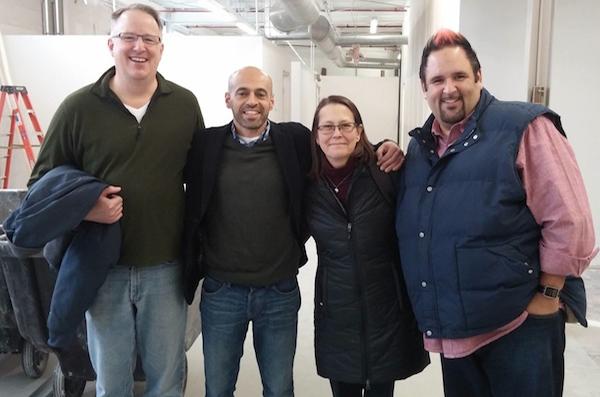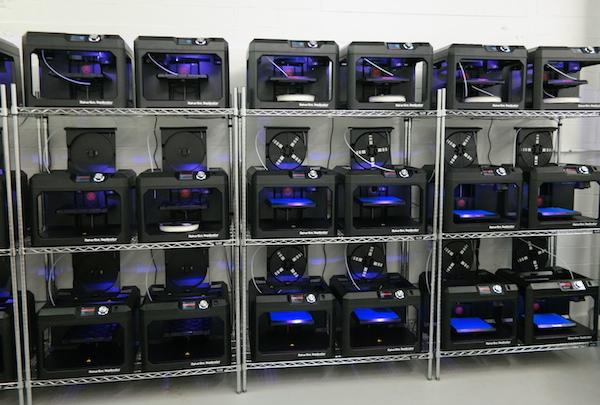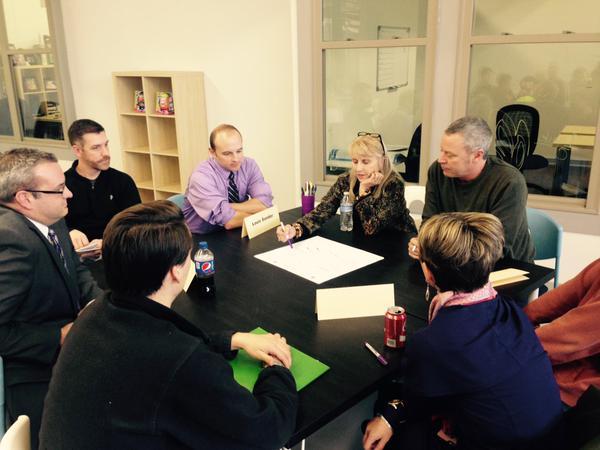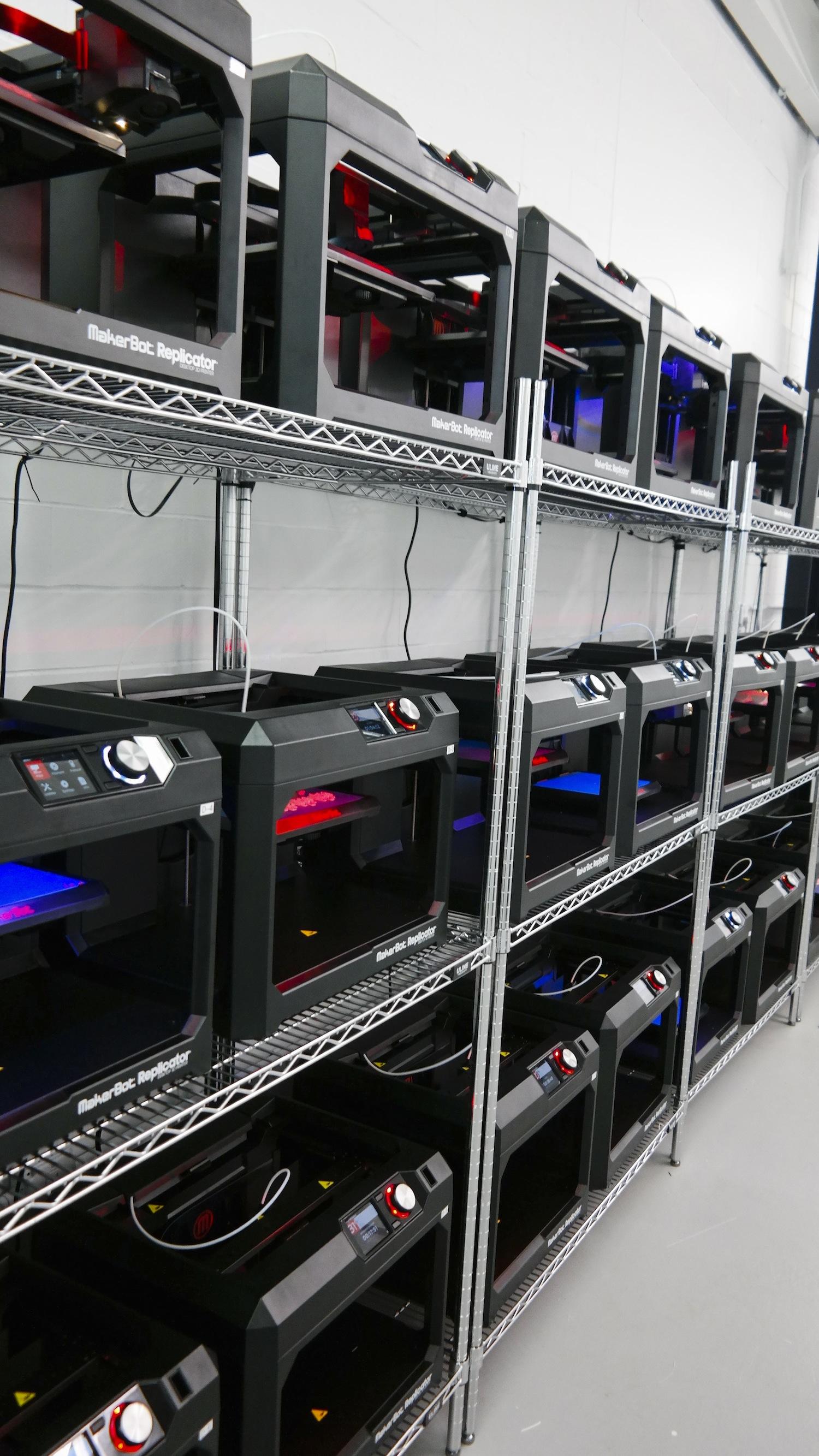 Xavier University may be one of the oldest learning institutions in the United States, but they have a serious commitment to staying ahead of the times with new and innovative technology; so much so that as of last week, they have just become the forth university to house a MakerBot Innovation Center, with a whopping thirty-one 3D printers.
Xavier University may be one of the oldest learning institutions in the United States, but they have a serious commitment to staying ahead of the times with new and innovative technology; so much so that as of last week, they have just become the forth university to house a MakerBot Innovation Center, with a whopping thirty-one 3D printers.
Founded in 1831 in Cincinnati, Ohio, Xavier University is a Jesuit Catholic university, and home to 6,325 total students, including 4,355 undergraduates. With some serious physical and creative space designated for their students this year at their new School for Arts and Innovation, Xavier purchased the large stock of 3D printers to run their new MakerBot 3D Innovation Center which will be housed in the Center for Innovation, an entirely new building dedicated to their fledgling program. There are only three other universities in the country that currently offer MakerBot 3D Printing Innovation Centers to their students, and Xavier is the only private institution to do so.
The idea of the MakerBot center came about due to Xavier’s enthusiasm and immersion into technology, innovation, and exploration into 3D design and 3D printing. The campus already had a scattered few 3D printers on campus, so they had dipped their toes into the water, and students and professors had been using the technology.
 It was at the Eureka! Ranch last year that light bulbs and excitement began to light the team on fire, spurring them into investing and reaching for the next level in commitment to innovation, as Provost Scott Chadwick sent 36 Xavier staff members to Eureka.
It was at the Eureka! Ranch last year that light bulbs and excitement began to light the team on fire, spurring them into investing and reaching for the next level in commitment to innovation, as Provost Scott Chadwick sent 36 Xavier staff members to Eureka.
The Eureka! Ranch is a custom-built facility located on 80 acres, just outside of Cincinnati. At their facility, they offer workshops that focus intently on innovation, something akin to a corporate teambuilding boot camp for creating big ideas that make big changes — and they have proven results with major companies who have benefited from their mission to develop the world’s most reliable methods for increasing innovation speed and decreasing risk.
While participating in the Innovative Engineering Workshop, with momentum rolling, staff began to brainstorm and came up with the idea for their Innovation Center at Xavier. This initial step was a huge project all in its own right, which was further accentuated when Shawn Nason, director of Xavier’s new Center for Innovation; Annette Marksberry, Assistant Provost and CIO for the university; and Carol Maegly, vice president of budgeting for the Provost Area, were drawn into the 3D printing extravaganza at 2015 International CES this year.
With their minds already heavily committed to the Innovation Center and a deep interest in 3D printing, it wasn’t long before they were in serious talks with MakerBot — and there wasn’t much of a sell involved as the Xavier team had their minds made up quickly about what they wanted to add to their university — not to mention making history with such a bold move.
“We started chatting with the MakerBot Innovation Center rep,” Marksberry says, “talking about how cool it is, this totally customized 3D printing and scanning system.”
With a focus on their students and with the burgeoning reality of what something like the MakerBot Center could offer at Xavier, the group attended a MakerBot demo, and a plan began to form by the next day.
“We were just abuzz with it,” Marksberry says. “It lit all three of us on fire. We couldn’t help but think, ‘Wow, what a world this would open for our students!'”
 And while their enthusiasm is educated and merited, there are some — as there are everywhere — who are skeptical not only about the technology and its validity, but also the significant expense entailed, considering the thirty-one 3D printers were not part of a package or a lease program by MakerBot. The 3D printers had to be purchased outright by private donors who funded the printers, three scanners, and a MakerBot Innovation Center Management Platform to handle the entire system.
And while their enthusiasm is educated and merited, there are some — as there are everywhere — who are skeptical not only about the technology and its validity, but also the significant expense entailed, considering the thirty-one 3D printers were not part of a package or a lease program by MakerBot. The 3D printers had to be purchased outright by private donors who funded the printers, three scanners, and a MakerBot Innovation Center Management Platform to handle the entire system.
“People want to know if this is just a new toy or if it is really going to stick,” Nason says. “And I can totally understand that.”
The Innovation team at Xavier does have the full support of their Board as well as those in other leadership positions, both inside and out of Xavier, but they understand that many people will need to see the program in action before they truly understand its enormous value to the student body.
Gary Lewondowski, Xavier professor of mathematics and computer science, who was one of the first to house a 3D printer in his office at the university, will be in charge of designing and implementing the curriculum for the Human-Centered Making major at Xavier, which will obviously have great reliance on the MakerBot Innovation Center and what it can offer as their focus is on  creating items that improve the quality of human life through 3D printing and other methods as well.
creating items that improve the quality of human life through 3D printing and other methods as well.
The purpose of the major is in making digital designs into tangible things ‘for humans.’
“When you’re used to building virtual things, its great to see it live and in person,” he says. “Think about something like an item from history, an old button, let’s say. It’s one thing to talk about it, but to hold something in your hand — that’s very different.”
One of Lewondowski’s students, Alex Milliken, is passionate about design.
“Personally I love the idea of designing something and then printing it,” Milliken says. “You get to see this little machine create what you choose to build right in front off your eyes, which I think is amazing.”
The new MakerBot Innovation Center should truly inspire Milliken and her peers, and we look forward to reporting on some of their future creations with 3D printing.
“The MakerBot Innovation Center has garnered huge interest since we first introduced the concept last year, and we’re excited that Xavier University has decided to work with us to unleash the creative potential of 3D printing on its campus and in the Cincinnati area. The passion for innovation and 3D printing at Xavier is contagious and we can’t wait to see what comes out of their MakerBot Innovation Center,” noted Jenny Lawton, CEO of MakerBot. “We’re particularly thrilled to provide the team at Xavier with Consulting from MakerBot to help develop a curriculum that integrates 3D printing. This is an important step that will help introduce more students, community members, and entrepreneurs to the idea of 3D printing and how this technology can help them visualize and memorize complex theoretical concepts, gain hands-on experience and unleash their creativity.”
What potential do you see for Xavier with so many 3D printers and enthusiastic students — and staff — on hand? Do you or does anyone you know attend a learning institution with 3D printers on campus? Discuss in the Xavier MakerBot Innovation Center forum over at 3DPB.com.
Subscribe to Our Email Newsletter
Stay up-to-date on all the latest news from the 3D printing industry and receive information and offers from third party vendors.
You May Also Like
3D Printed Heat Spreader Could Improve Efficiency of Electronics
The low-hanging fruit for decarbonization has long been improving the efficiency of existing systems, hence the justification for LED lights and ENERGY STAR certified appliances. While such minor moves are...
3D Printing News Unpeeled: Marine Gearboxes, 3D Printed Motors and $1.7 Million in Seed Funding
UK based Equipmake just released their Ampere-220 e-axle system. The system, which is meant for high performance electric cars, was similar to one released on the Ariel HIPERCAR. It has...
CEAD Unveils 36-Meter-Long 3D Printer for Abu Dhabi’s Al Seer Marine
CEAD, a Dutch original equipment manufacturer dedicated to large-format 3D printers, has unveiled what it claims to be the world’s largest robotic arm-based 3D printer. At 36 meters long and...
3D Printed Biocomposites Could Help Reduce Marine Plastic Pollution
Concerns about the impact of plastic litter and microplastics in the oceans are at the forefront of environmental study. For decades, the marine environment has suffered from the degradation of...





































